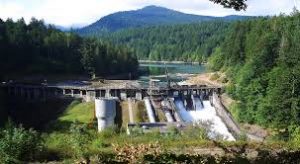Ageing Water Infrastructure: An Emerging Global Risk: UN Report:

According to a United Nations (UN) report “Ageing water infrastructure: An emerging global risk”, over 1,000 large dams in India will be roughly 50 years old in 2025 and such ageing embankments across the world pose a growing threat.
- The report, compiled by Canada-based Institute for Water, Environment and Health, says the world is unlikely to witness another large dam-building revolution as in the mid-20th century, but dams constructed then will inevitably be showing their age.
- The analysis includes dam decommissioning or ageing case studies from the USA, France, Canada, India, Japan, and Zambia and Zimbabwe.
Global Scenario:
- Most of the 58,700 large dams worldwide were constructed between 1930 and 1970 with a design life of 50 to 100 years.
- By 2050, most people on Earth will live downstream of tens of thousands of large dams built in the 20th century, many of them already operating at or beyond their design life.
- At 50 years, a large concrete dam “would most probably begin to express signs of ageing.”
- Ageing signs include increasing cases of dam failures, progressively increasing costs of dam repair and maintenance, increasing reservoir sedimentation, and loss of a dam’s functionality and effectiveness – “strongly interconnected” manifestations.
- 32,716 large dams (55% of the world’s total) are found in just four Asian countries: China, India, Japan, and South Korea – a majority of which will reach the 50-year threshold relatively soon.
India Scenario:
- India is ranked third in the world in terms of building large dams.
- Of the over 5,200 large dams built so far, about 1,100 large dams have already reached 50 years of age and some are older than 120 years.
- The number of such dams will increase to 4,400 by 2050.
- This means that 80% of the nation’s large dams face the prospect of becoming obsolete as they will be 50 years to over 150 years old.
- The situation with hundreds of thousands of medium and minor dams is even more dangerous as their shelf life is even lower than that of large dams.




